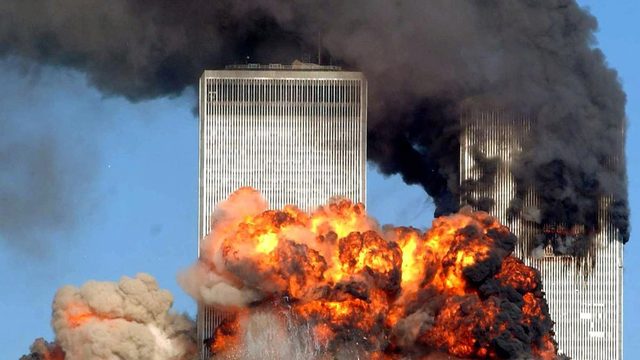Before 9/11/2001 America had never been attacked in that big way by a small group of terrorists. 9/11 has been compared to the 21st century “Pearl Harbor” meaning that it is a day that caused action by the American government. Even though we had experienced terror attacks before 9/11, this day may be seen as the beginning of the ongoing “War on Terror”. This day was the reason that America went to war in both Afghanistan and Iraq. This day caused many Americans to feel unsafe in their own country. Terrorism is a major problem in our current society. The government has to balance the need to keep citizens safe with the need to protect individual rights. This has caused a lot of debate in our society.
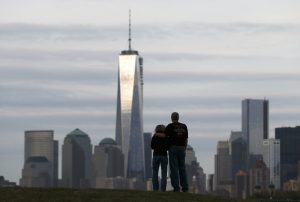
What caused the events of 9/11/01?
There are many conspiracy theories about this tragic day. Some of these theories include thoughts like; “the Jews were behind the attacks, the US government engineered them; the ‘Cheney-Bush energy junta’ planned them so that they could grab the oil fields of central Asia, and so on.
In fact, Osama bin Laden himself claimed that his terrorist organization al Qaeda; based on the religious extremism of Islam and a resentment against the power of the west, was solely responsible for 9/11. It was not the first time they had attacked America directly but it was the most memorable.
What happened on that day?
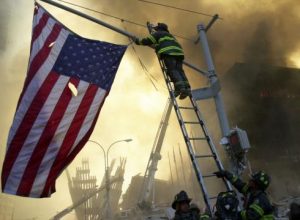
On September 11th 2001, while most Americans were ready to enjoy a beautiful sunny day and our President was visiting school children in Florida, 4 passenger jetliners were hijacked by members of Al Qaeda.
- 7:59 am – American Airlines Flight 11, a Boeing 767 with 92 people aboard, takes off from Boston’s Logan International Airport en route to Los Angeles.
- 8:14 am – United Airlines Flight 175, a Boeing 767 with 65 people aboard, takes off from Boston; it is also headed to Los Angeles.
- 8:19 am – Flight attendants aboard Flight 11 alert ground personnel that the plane has been hijacked; American Airlines notifies the FBI.
- 8:20 am – American Airlines Flight 77 takes off from Dulles International Airport outside of Washington, D.C. The Boeing 757 is headed to Los Angeles with 64 people aboard.
- 8:24 am – Hijacker Mohammed Atta makes the first of two accidental transmissions from Flight 11 to ground control (apparently in an attempt to communicate with the plane’s cabin).
- 8:40 am – The Federal Aviation Administration (FAA) alerts North American Aerospace Defense Command (NORAD)’s Northeast Air Defense Sector (NEADS) about the suspected hijacking of Flight 11. In response, NEADS scrambles two fighter planes located at Cape Cod’s Otis Air National Guard Base to locate and tail Flight 11; they are not yet in the air when Flight 11 crashes into the North Tower.
- 8:41 am – United Airlines Flight 93, a Boeing 757 with 44 people aboard, takes off from Newark International Airport en route to San Francisco. It had been scheduled to depart at 8:00 am, around the time of the other hijacked flights.
- 8:46 am – Mohammed Atta and the other hijackers aboard American Airlines Flight 11 crash the plane into floors 93-99 of the North Tower of the World Trade Center, killing everyone on board and hundreds inside the building.
- 8:47 am – Within seconds, NYPD and FDNY forces dispatch units to the World Trade Center, while Port Authority Police Department officers on site begin immediate evacuation of the North Tower.
- 8:50 am – White House Chief of Staff Andrew Card alerts President George W. Bush that a plane has hit the World Trade Center; the president is visiting an elementary school in Sarasota, Florida at the time.
- 9:02 am – After initially instructing tenants of the WTC’s South Tower to remain in the building, Port Authority officials broadcast orders to evacuate both towers via the public address system; an estimated 10,000 to 14,000 people are already in the process of evacuating.
- 9:03 am – Hijackers crashed United Airlines Flight 175 into floors 75-85 of the WTC’s South Tower, killing everyone on board and hundreds inside the building
- 9:08 am – The FAA bans all takeoffs of flights going to New York City or through the airspace around the city.
- 9:21 am – The Port Authority closes all bridges and tunnels in the New York City area.
- 9:24 am – The FAA notified NEADS of the suspected hijacking of Flight 77 after some passengers and crew aboard are able to alert family members on the ground.
- 9:31 am – Speaking from Florida, President Bush calls the events in New York City an “apparent terrorist attack on our country.”
- 9:37 am – Hijackers aboard Flight 77 crash the plane into the western façade of the Pentagon in Washington, D.C., killing 59 aboard the plane and 125 military and civilian personnel inside the building.
- 9:42 am – For the first time in history, the FAA grounds all flights over or bound for the continental United States. Some 3,300 commercial flights and 1,200 private planes are guided to airports in Canada and the United States over the next two-and-a-half hours.
- 9:45 am – Amid escalating rumors of other attacks, the White House and U.S. Capitol building are evacuated (along with numerous other high-profile buildings, landmarks and public spaces).
- 9:59 am – The South Tower of the World Trade Center collapses.
- 10:07 am – After passengers and crew members aboard the hijacked Flight 93 contact friends and family and learn about the attacks in New York and Washington, they mount an attempt to retake the plane. In response, hijackers deliberately crash the plane into a field in Somerset County, Pennsylvania, killing all 40 passengers and crew aboard.
- 10:28 am – The World Trade Center’s North Tower collapses, 102 minutes after being struck by Flight 11.
- 11 am – Mayor Rudolph Giuliani calls for the evacuation of Lower Manhattan south of Canal Street, including more than 1 million residents, workers and tourists, as efforts continue throughout the afternoon to search for survivors at the WTC site.
- 1 pm – From a U.S. Air Force base in Louisiana, President Bush announces that U.S. military forces are on high alert worldwide.
- 2:51 pm – The U.S. Navy dispatches missile destroyers to New York and Washington, D.C.
- 5:20 pm – The 47-story Seven World Trade Center collapses after burning for hours; the building had been evacuated in the morning, and there are no casualties, though the collapse forces rescue workers to flee for their lives.
- 6:58 pm – President Bush returns to the White House after stops at military bases in Louisiana and Nebraska.
- 8:30 pm – President Bush addresses the nation, calling the attacks “evil, despicable acts of terror” and declaring that America, its friends and allies would “stand together to win the war against terrorism.”
http://www.history.com/topics/9-11-timeline
What is al Qaeda? Who was Osama Bin Laden?
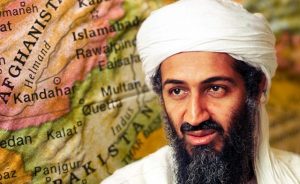
The terrorist organization Al Qaeda is determined to end all U.S. influence in Islamic nations. Al Qaeda and its founder, Osama bin Laden, are believed to be responsible for many of the worst acts of terrorism of the late 20th century and early 21st century, including the World Trade Center and Pentagon attacks in the United States, which killed nearly 3,000 people.
Who was Osama Bin Laden?
- Born in Saudi Arabia in 1957
- At the age of 14, Osama was recognized as an outstanding, if somewhat shy, student at Al Thagher. As a result, he received a personal invitation to join a small Islamic study group with the promise of earning extra credit. Osama, along with the sons of several prominent Jedda families, were told the group would memorize the entire Koran, a prestigious accomplishment, by the time they graduated from the institution. But the group soon lost its original focus, and during this time Osama received the beginnings of an education in some of the principles of violent jihad.
- The teacher who educated the children, influenced in part by a sect of Islam called The Brotherhood, began instructing his pupils in the importance of instituting a pure, Islamic law around the Arab world. Using parables with often-violent endings, their teacher explained that the most loyal observers of Islam would institute the holy word—even if it meant supporting death and destruction. By the second year of their studies, Osama and his friends had openly adopted the attitude and styles of teen Islamic activists. They preached the importance of instituting a pure Islamic law at Al Thagher; grew untrimmed beards; and wore shorter pants and wrinkled shirts in imitation of the Prophet’s dress.
- When the Soviet Union invaded Afghanistan in 1979, Osama joined the Afghan resistance, believing it was his duty as a Muslim to fight the occupation. He relocated to Peshawar, Afghanistan, and using aid from the United States under the CIA program Operation Cyclone, he began training a mujahideen, a group of Islamic jihadists. After the Soviets withdrew from the country in 1989, Osama returned to Saudi Arabia as a hero, and the United States referred to him and his soldiers as “Freedom Fighters.”
- Yet Osama was quickly disappointed with what he believed was a corrupt Saudi government, and his frustration with the U.S. occupation of Saudi Arabia during the Persian Gulf War led to a growing rift between Osama and his country’s leaders. Bin Laden spoke publicly against the Saudi government’s reliance on American troops, believing their presence profaned sacred soil. After several attempts to silence Osama, the Saudis banished the former hero. He lived in exile in Sudan beginning in 1992.
- By 1993, Osama had formed a secret network known as al Qaeda (Arabic for “the Base”), comprised of militant Muslims he had met while serving in Afghanistan. Soldiers were recruited for their ability to listen, their good manners, obedience, and their pledge to follow their superiors. Their goal was to take up the jihadist cause around the world, righting perceived wrongs under the accordance of pure, Islamic law. Under Osama’s leadership, the group funded and began organizing global attacks worldwide. By 1994, after continued advocacy of extremist jihad, the Saudi government forced Osama to relinquish his Saudi citizenship, and confiscated his passport. His family also disowned him, cutting off his $7 million yearly stipend.
- By 2001, Osama had attempted, and often successfully executed attacks on several countries using the help of Al Qaeda trained terrorists and his seemingly bottomless financial resources. On September 11, 2001, Osama would deliver his most devastating blow to the United States. A small group of Osama’s Al Qaeda jihadists hijacked four commercial passenger aircraft in the United States, two of which collided into the World Trade Center towers. Another aircraft crashed into The Pentagon in Arlington, Virginia. A fourth plane was successfully retaken, and crashed in Pennsylvania. The intended target of the final aircraft was believed to be the United States Capitol. In all, the attack killed nearly 3,000 civilians.
- Following the September 11 attacks on the United States, the government under President George W. Bush formed a coalition that successfully overthrew the Taliban. Osama went into hiding and, for more than 10 years, he was hunted along the Afghanistan-Pakistan border. In 2004, shortly before President Bush’s re-election, Osama bin Laden released a videotaped message claiming responsibility for the attacks on 9/11.
- How is Al Qaeda an example of religious extremism?
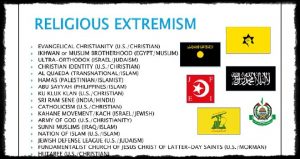
- Al Qaeda is a terrorist group responsible for the attack on September 11 2001
- Religious extremism is a single minded obsession to act in an immoderate way in the name of God or for the cause of a certain belief.
- fanaticism, enthusiasm, madness, devotion, dedication, zeal, bigotry, infatuation, single-mindedness,zealotry, obsessiveness, monomania, immoderation, overenthusiasm
- Al Qaeda’s leader Osama Bin Laden was killed by the United States government on a secret mission in Pakistan ordered by President Obama.
- on May 2, 2011, President Barack Obama announced that Osama bin Laden had been killed in a terrorist compound in Abbottabad, Pakistan. In an eight-month plan enacted by the president, and led by CIA Director Leon Panetta and American special forces, Osama was shot several times. His body was taken as evidence of his death, and DNA tests revealed that the body was, in fact, his. “For over two decades, bin Laden has been al Qaeda’s leader and symbol and has continued to plot attacks against our country and our friends and our allies,” President Obama said in a late-night address to the nation on the eve of Osama’s death. “The death of bin Laden marks the most significant achievement to date in our nation’s effort to defeat al Qaeda.” He added that “his demise should be welcomed by all who believe in peace and human dignity.”
- What is the USA Patriot Act?
- The USA Patriot Act is a bill created in Congress that was signed into law by president George W. Bush on october 26, 2001. This law gave more power to the US Government to increase security at the cost of less liberty and privacy for citizens.
http://study.com/academy/lesson/george-w-bush-the-9-11-terrorist-attack-war-on-terror.html
http://topdocumentaryfilms.com/breaking-the-silence/ = a 2003 documentary of the War on Terror
http://www.history.com/topics/9-11-attacks
Terrorism is a major problem in our current society. The government has to balance the need to keep citizens safe with the need to protect individual rights. This has caused a lot of debate in our society.
What were the results of the events of that day?
The events of September 11, 2001, resulted in tragic loss of the life and significant disruption to workers in the local affected economies.
What are the vocabulary terms to know about terrorism?
Terrorism: the use of force or threats to frighten people or governments to change their policies
Extremism: radical ideas or beliefs
Hijack: to force a pilot to fly an aircraft where one wants
Olympic Games: a series of international athletic contests held in a different country during the summer and the winter once every four years. The Munich 1972 Olympic games were the site of a Palestinian terror attack against the Israeli delegation.
Black September: Palestinian terrorist group responsible for 1972 Olympic Games terrorist attack.
al Qaeda: terrorist group responsible for the attack on September 11
Osama bin Laden: one of the leaders of the September 11 terrorist attack
USA Patriot Act: an anti-terrorism law passed after September 11
Detain: to hold or keep. Terror suspects were detained by the US government in places such as Guantanamo Bay Cuba military base often without a trial or hearing.
- How has the war on terror been different from other wars?
The term “war on terror” is used everywhere, but the meaning of the word “war” has evolved. For most of the last 2,000 years, war has meant something very conventional and traditional. The current war on terror, however, is a completely unconventional, non-traditional type of conflict.
Georgetown University historian Bruce Hoffman says; unlike traditional wars, the war on terror does not have a clear beginning and an end.”[War] ends with the vanquishing of an opponent, with some form or armistice or truce — some kind of surrender instrument or document,” Hoffman says.
But in the war on terror, there’s no specific battlefield and the enemy isn’t an army.
“It’s a war without boundaries,” Hoffman says. “It’s a war directed against multiple enemies, not just one adversary.” It is a hard war to define. The multiple adversaries make the war on terror hard to define, says former House Speaker Newt Gingrich.
“[War can have] multiple meanings that are non-violent, because it becomes a political term meaning mass mobilization,” he says.
In some respects, the war on terror is similar to Lyndon Johnson’s unconditional war on poverty or Ronald Reagan’s promise to win the war on drugs. All three wars are invisible and waged against the possibility of something happening. Unlike those wars, however, the war on terror isn’t just a symbolic call to arms — it has had real-world implications.
Points of view to consider when studying the causes and effects of 9/11:
- The terrorist
- The US Government
- The Global response
- The victims / the citizens
